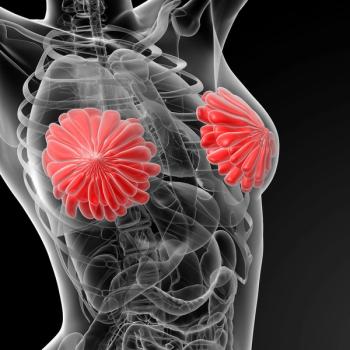
Oncology NEWS International
- Oncology NEWS International Vol 8 No 2
- Volume 8
- Issue 2
Sequential Vinorelbine, Paclitaxel Tested
MANHASSET, NY-An open-label study of vinorelbine (Navelbine) followed by paclitaxel (Taxol) in patients with metastatic breast cancer has yielded an active dosing schedule for this regimen for use in phase II testing, Daniel R. Budman, MD, said at a poster session of the San Antonio Breast Cancer Symposium.
MANHASSET, NYAn open-label study of vinorelbine (Navelbine) followed by paclitaxel (Taxol) in patients with metastatic breast cancer has yielded an active dosing schedule for this regimen for use in phase II testing, Daniel R. Budman, MD, said at a poster session of the San Antonio Breast Cancer Symposium.
Dr. Budman, of North Shore University Hospital, said that vinorelbine and paclitaxel have been shown to have a synergistic effect when combined in animal models and cultured cell lines. Our preclinical studies suggested that vinorelbine must be given prior to paclitaxel for a synergistic effect, Dr. Budman said.
The combination was tested in 28 patients, 79% of whom had received prior anthracyclines. Profound neutropenia occurred at the first dose level but was avoided by the use of G-CSF (Neupogen) at subsequent levels.
Responses were seen in 12 of 25 evaluable patients (48%) and in 10 of 22 patients (45%) treated with prior anthracyclines. Based on this dose escalation trial, the recommended phase II schedule is vinorelbine 13 mg/m² daily for 3 days followed by paclitaxel 175 mg/m2 over 3 hours on day 3.
Articles in this issue
almost 27 years ago
Paclitaxel Plus Mitoxantrone for Poor-Prognosis Breast Canceralmost 27 years ago
Faslodex, Pure Antiestrogen, Studied in Tamoxifen-Resistant Breast Canceralmost 27 years ago
LHRH Agonist Plus Tamoxifen Improves Outcome in Young Metastatic Patientsalmost 27 years ago
Pros and Cons of Different Approaches to Chemoradiationalmost 27 years ago
Less Cardiotoxicity With Liposomal Doxorubicinalmost 27 years ago
Optimizing Docetaxel Tolerability in Anthracycline-Resistant Breast Canceralmost 27 years ago
Doxorubicin Appears to Change Natural History of HER-2+ Cancer’salmost 27 years ago
Tamoxifen After Surgery/RT Decreases Local Recurrence Risk in DCIS PatientsNewsletter
Stay up to date on recent advances in the multidisciplinary approach to cancer.


















































































